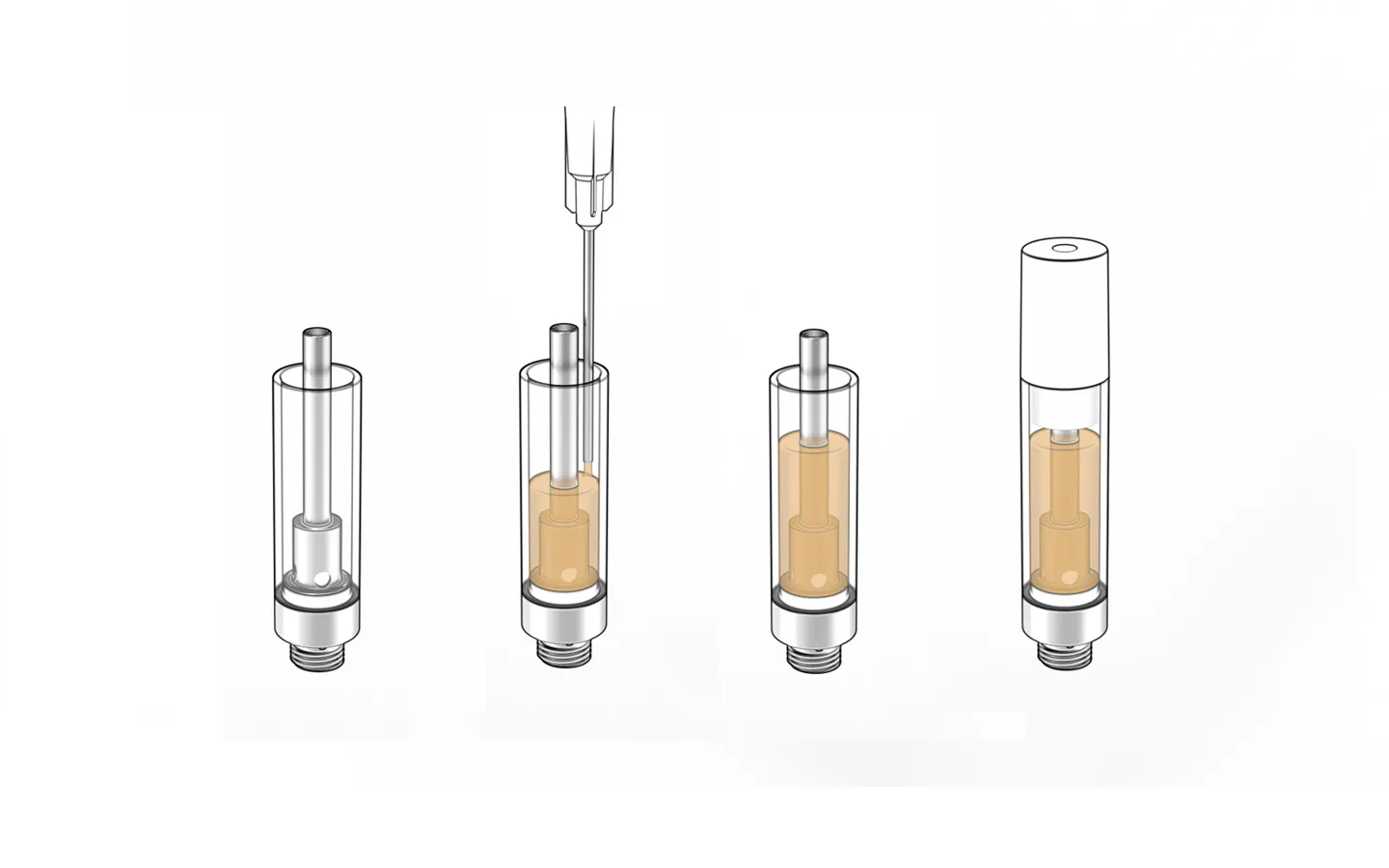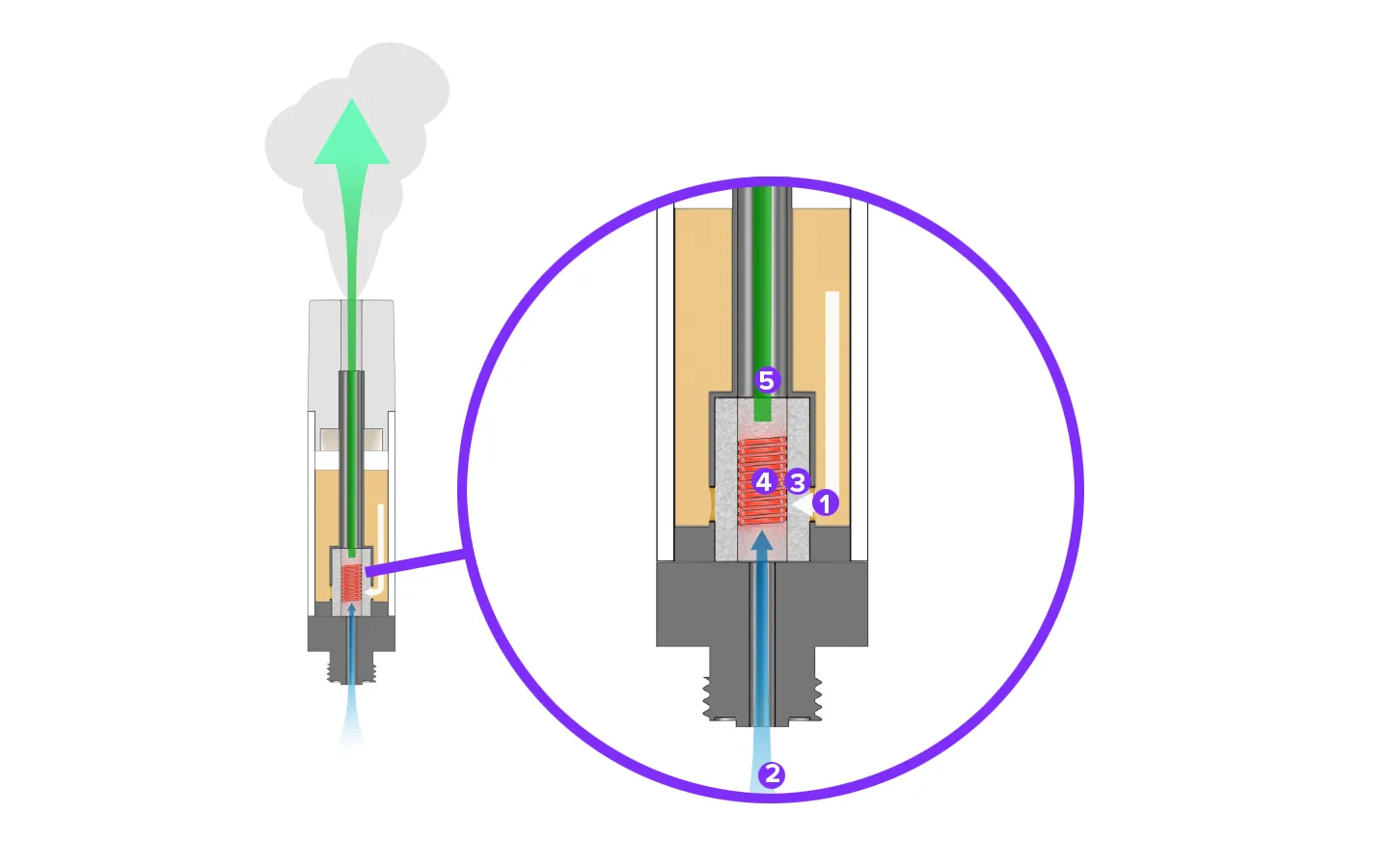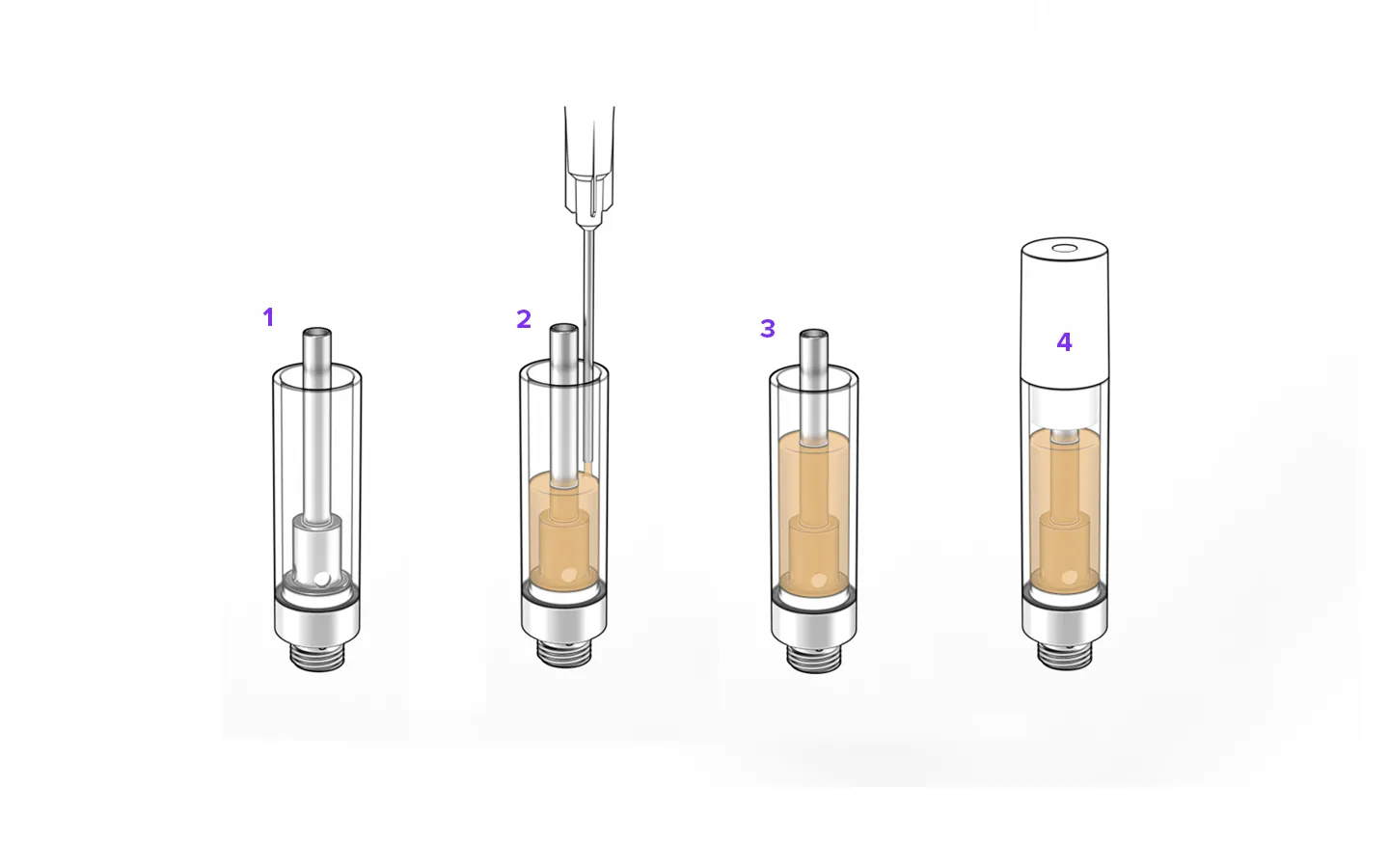Vape Filling 101 – Basics and Misconceptions
Learn about the anatomy of a vape cart, the basic functions of vape cartridges, and common filling misconceptions.
by Jeff Wu - July 31, 2024
Considering all vape cart components and resin inputs, it is vital to understand how vape carts function to mitigate issues that can cause your vape to leak or alter resin quality. All vaporizers are filled with a resin, which passes over a heating coil when inhaled. The heating coil is hot enough to vaporize the resin and generate a mist of resin vapor, that is carried off by the air steam. This article will act as a guide and provide suggestions on how to prevent vape cart issues from happening.

How a Vape Cart Works
Atomizer Principles & Examples
Atomization is the process of transforming larger volumes of liquids into airborne droplets. The atomizing tube is the heating element which converts the cannabis oil into inhalable vapor. When you inhale from the mouthpiece or press the “On” button on the battery, the pull or button activates the heating element, called the atomizing tube, which converts the cannabis oil into inhalable airborne droplets.
Vacuum lock principle
Today’s vape cartridges are designed with a vacuum lock to prevent them from leaking. A significant portion of leaks are caused by vacuum lock loss that occurs during the filling process, or mishandling by the consumer that causes vacuum loss. There are a number of ways that manufacturers, processors, or cart fillers can reduce vacuum lock loss before it reaches the customers.

Basics of filling
Cannabis vape manufacturers hand-fill a vape cart by injecting the cannabis oil into the cartridge reservoir, with a blunt-tip needle and syringe, such as a point style 3 needle. When hand-filling, avoid getting any oil into the atomizer and leave some air in the tank for the vacuum lock.
Equipment Needed: Steady hand, carts, cart holder, gloves, X ml syringe, X gauge needle, desired concentrate.
How to achieve high cart fill lines:
Cap Quickly
Cap your vape cart as fast as possible – within 5 seconds is ideal.
If capping speed is too slow, resin will soak into the atomizer lowering the level of the vape sometimes to the point of leaking out the bottom of the cartridge. If a defective or slanted capping occurs, the vacuum lock will not form properly and the cart will leak.
Lower Temperature
Fill at lower temperatures 45-55C
High temperatures makes filling easy; however, high temperatures also lowers viscosity, makes cannabis resin “runny” and causing it to soak more easily into the cartridge. This lowers the fill lines even when the cartridge has been filled with the same volume because the resin flows more easily through the structure of the vape cart.
Automated filling systems like Xylem’s X4 are designed for low-temperature cart filling.
Prevent Oxidation and Off-Gassing
Store immediately in a cold or refrigerated environment.
Live resin and rosin are biological compounds that start to degrade the moment they are filled into vape carts. This degradation process creates gases that build into bubbles in the vape cart. To slow and even stop the process, store finished goods in cold, temperature-controlled spaces. Live resin that is refrigerated preserves over a year.
Misconceptions in Cart Filling
Question: Do carts need to be flipped over after filling?
Answer: If the cart is capped within 5 seconds, 100% NO, If the cart is capped between 5-30 seconds, 50/50 MAYBE based on formulation. If the cart is capped after 1 minute, then YES flipping the cart over is required.
The reason for flipping carts over is to ensure that any trapped air in the reservoir can escape via the resin inlet ports. Air pockets form, then get trapped when the vape is capped too slowly. For systems like Thompson Duke or ATG, with up to 5 minutes before capping, there is significant air that needs to be released. For systems like the Xylem X4 cart filler this process is completely unnecessary.
Additionally, formulated mixes with too high a percentage of terpenes with distillate are sometimes runny with low viscosity. If the resin filled at distillate temperatures is greater than 60C there is very little time to perform the capping action.
Question: Do carts need to stand upright after filling?
Answer: NO if it is capped quickly, if not, then YES.
If capped quickly, a strong vacuum seal will instantly form, with no trapped air. Again, this process is unnecessary on Xylem automated cartridge filling systems.
If the capping process is too slow then, the vapes need to be flipped over upside down until the air can be released, then turn right side up again to reestablish the vacuum lock.
Common Causes for Vape Cart Defects
Caps popping up
This is a result of a combination of poor cart design or poor filling technique. For example, when workers scrape resin from needles onto the edges of carts, the resin gets trapped in the seal, and as a result, the seal does not function.
Carts leaking from the bottom
This is caused by slow capping. It is usually not a major issue but does create a poor user experience due to a clogged battery base or messiness.
Carts leaking from the top
This is usually the result of poor atomizer design. It is not too serious; however, it causes a poor appearance in the vape and occasionally bitter resin landing in the mouth. This can often be why some brands have solid-solid-colored mouthpieces in an attempt to hide resin leaks from the top.
Discoloration (purple, browning, blacking)
This results from slow capping, trapped air and/or poor pH control of the resin.
Low fill line
This is caused by slow capping or storage at high temperatures for long periods of time. Thus, resulting in off‐gassing.
Clogging of vape cart inlet ports
This results from the incomplete decarboxylation (decarbing) of live resin, rosin, or THCA. Although the vape will be unusable, the extractor’s intentions were good in trying to provide a “flower” like experience by only decarbing a partition of the THCA into D9 THC. Partial decarbing is difficult to control and can result in the THCA recrystallizing.
The cart can be cracked open, and the contents can be dabbed if desired.
Catastrophic leaks (complete emptying out)
When a vape cart is defective, it is usually due to bad seals or simply poor vape design.

Jeff Wu
Technical Director
Investor & entrepreneur, bringing a unique blend of scientific knowledge and hands-on experience in pharma, laboratory, manufacturing, and cannabis. Deep understanding of chemistry, electronics manufacturing, automation, and cannabis processing.